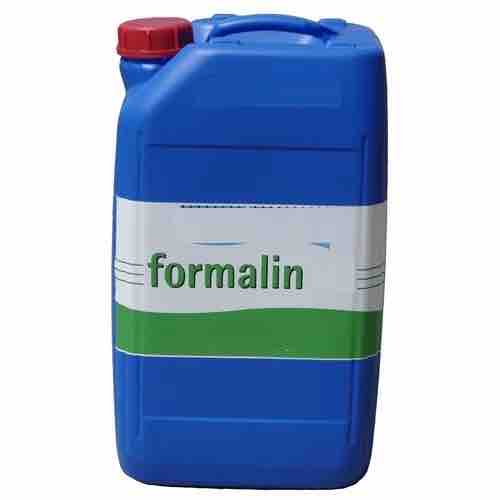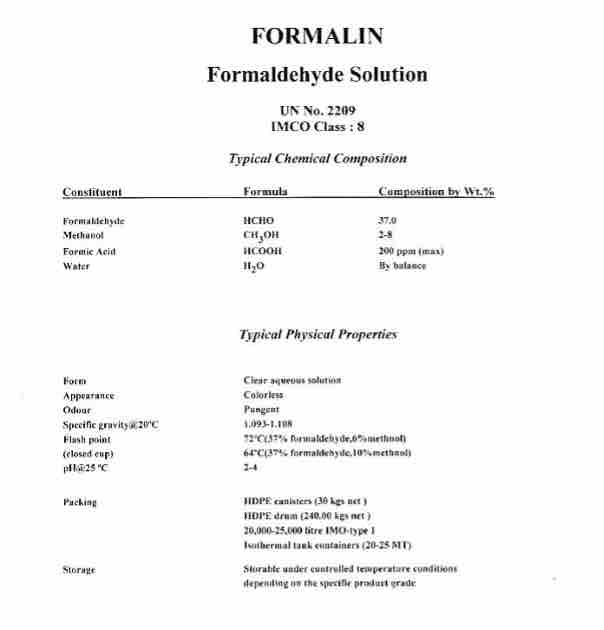
Formalin formaldehyde

What is Formalin?
Formalin is a clear, colorless solution of formaldehyde dissolved in water, typically containing 37% formaldehyde by weight.
It has a strong, pungent odor and serves as a powerful chemical in several industries.
Therefore, manufacturers, laboratories, and medical professionals rely on formalin for preservation, disinfection, and industrial production.
Basekim supplies high-quality formalin with safe packaging and international delivery, ensuring consistent performance for industrial and medical applications.
Key Applications of Formalin
Because of its unique chemical properties, formalin plays a vital role across multiple industries.
Furthermore, it works as a disinfectant, preservative, fixative, and raw material for various manufacturing processes.
1. Tissue Preservation
Medical and research laboratories depend on formalin to preserve biological tissues for histology and pathology studies.
It works by cross-linking proteins, which prevents tissue decay and maintains structural integrity.
Consequently, researchers can study disease progression, cellular changes, and tissue structure in detail.
Used in hospitals, clinics, and research centers.
Prevents bacterial and enzymatic breakdown of tissue samples.
Essential for accurate diagnosis and scientific analysis.
Additionally, formalin-fixed tissues can be embedded in paraffin and stained for microscopic examination, making them crucial for medical education and research.
2. Disinfection
Formalin acts as a strong disinfectant and sterilizing agent.
Healthcare facilities use it to kill bacteria, viruses, and fungi on surfaces and instruments.
Moreover, it provides long-lasting sterilization when applied correctly.
Standard procedure:
Prepare a 3% to 10% solution of formalin with water.
Spray or wipe surfaces with the solution.
Leave for 10–30 minutes for effective action.
Rinse thoroughly with clean water after disinfection.
As a result, hospitals and laboratories maintain strict hygiene and prevent cross-contamination.
3. Embalming and Preservation of Bodies
Funeral homes and medical schools use formalin to preserve human and animal remains.
It slows natural decomposition by cross-linking proteins in tissues, making them resistant to bacteria and other microorganisms.
Therefore, embalmed bodies remain safe for handling, transport, and study.
Essential for funeral practices in many cultures.
Used in medical schools for anatomical training.
Provides a safe environment for researchers and embalmers.
However, embalmers must follow strict safety procedures because prolonged exposure can irritate the skin, eyes, and respiratory system.
4. Plastics Manufacturing
Formalin plays a crucial role in thermoset plastic production.
When added to a plastic mixture, it reacts with other chemicals to form strong cross-linked polymer chains.
Consequently, the final product becomes heat-resistant, durable, and chemically stable.
Ideal for industrial components and heat-resistant plastics.
Improves the strength and life span of finished goods.
Reduces production waste and enhances material performance.
However, strict training and safety measures are necessary to protect workers from hazardous exposure.
5. Textile and Fabric Industry
Manufacturers use formalin to enhance fabric properties.
For example, it can create permanent press finishes that prevent wrinkling and make fabrics easier to care for.
Additionally, it improves colorfastness, ensuring fabrics resist fading after repeated washing.
Used in clothing, upholstery, and industrial fabrics.
Enhances fabric appearance and quality.
Reduces maintenance for end consumers.
Nevertheless, workers must wear protective gear because direct contact may cause irritation.
How Formalin Works in Tissue Preservation
Tissue begins to decompose quickly once removed from a living organism.
Therefore, scientists immerse samples in a 10% formalin solution to prevent bacterial growth and enzymatic breakdown.
The solution cross-links amino acids in proteins, making tissue rigid and resistant to decay.
Step-by-step process:
Collect tissue samples immediately after removal.
Immerse samples in 10% formalin solution.
Leave for several hours, depending on tissue type and size.
Process and embed samples in paraffin.
Stain sections for microscopic study.
Consequently, preserved samples remain stable for months or even years, supporting research and diagnosis.
Formalin Safety Guidelines
Formalin is effective, but it is also a hazardous substance.
Therefore, strict safety procedures are essential to prevent harm to workers and the environment.
Potential Health Risks
Irritates skin, eyes, and respiratory system.
Prolonged exposure can lead to chronic respiratory issues.
Classified as a potential carcinogen with long-term exposure.
As a result, handling formalin requires proper protective measures.
Safety Measures
Wear protective gloves, goggles, and clothing.
Work in ventilated areas or under fume hoods.
Avoid direct contact with skin and eyes.
Store in sealed, corrosion-resistant containers.
Keep away from heat, flames, and strong oxidizing agents.
Furthermore, always follow local regulations for chemical handling and waste disposal.
Handling Formalin in Different Applications
In Disinfection
Prepare accurate concentrations to avoid overexposure.
Use sprayers or wipes for even coverage.
Allow proper contact time for effective sterilization.
Rinse all surfaces thoroughly after use.
In Embalming
Use dedicated embalming rooms with strong ventilation.
Wear full protective gear to reduce inhalation risks.
Label all containers clearly to prevent accidents.
Train all staff in emergency response procedures.
for Manufacturing
Ensure workers receive training on safe chemical handling.
Provide eyewash stations and safety showers near production areas.
Monitor air quality to detect harmful vapor levels.
Store formalin securely to prevent leaks or spills.
Formalin in Modern Industries
Because formalin offers versatility and reliability, industries continue to use it globally.
Moreover, it plays a vital role in:
Medical research and diagnostics.
Pharmaceutical manufacturing.
Textile production.
Plastic and resin production.
Funeral and anatomical preservation services.
Thus, formalin remains essential despite safety concerns, as long as proper handling procedures are followed.
Environmental Considerations
Formalin must never be disposed of in regular waste systems.
Consequently, companies must treat wastewater and follow strict environmental regulations.
Additionally, using closed systems and advanced ventilation helps reduce emissions and protect surrounding communities.
Frequently Asked Questions (FAQ)
1. What is formalin primarily used for?
Formalin is used for tissue preservation, disinfection, embalming, plastics production, and textile processing in medical and industrial settings.
2. Is formalin safe to handle?
Formalin can be hazardous.
However, when handled with protective equipment and in ventilated areas, it is safe for industrial and medical use.
3. What concentration of formalin is used for tissue preservation?
A 10% solution is standard for fixing biological tissues in histology and pathology labs.
Summary
Formalin is a highly effective chemical solution with critical roles in tissue preservation, sterilization, embalming, textile production, and plastics manufacturing.
However, its hazardous nature requires strict safety measures, including proper storage, handling, and protective equipment.
Basekim supplies premium-quality formalin globally, providing safe packaging, reliable delivery, and full compliance with international standards.
Consequently, businesses and laboratories can rely on Basekim for consistent, safe, and efficient formalin solutions.
Specification . analysis and data sheet of formalin

Contact Info
Turkey office:No.6 of Fahrettin Pasa Sokak , Galip Erdem steet, Ilkbahar Mah. Turan Gunes Ave. Çankaya Ankara
Phone:00903125147055
Dubai office: 3509 of the Burligton tower, business bay, Dubai-UAE
Phone:0097142369830